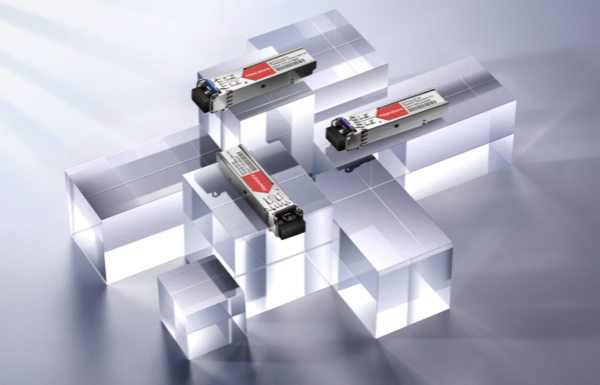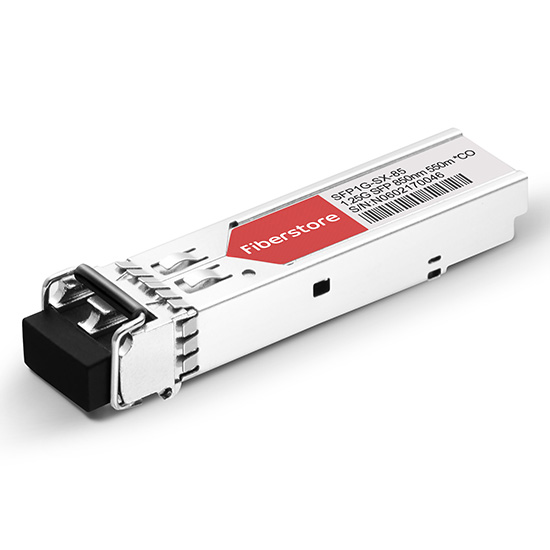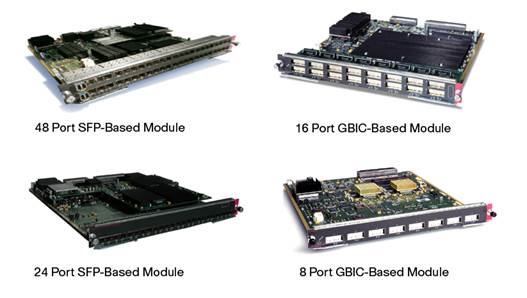Cisco is a worldwide leader in the telecommunication industry whose routers, switches are very welcome among the users. To work well with those Cisco networking applications, Cisco SFP transceivers are the best choice. GLC-SX-MM, GLC-SX-MMD, GLC-SX-MM-RGD and SFP-GE-S are different types of Cisco 1000BASE SFP transceiver module. All these transceiver modules comply with IEEE 802.3z 1000BASE standard. And since there are similar specifications for these four transceiver modules, users may be confused when they need to choose one SFP module for their Cisco switches. Here we’ll make a comparison of GLC-SX-MM, GLC-SX-MMD, GLC-SX-MM-RGD and SFP-GE-S transceiver modules to help you choose the suitable one.
Which transceiver module will you choose?
Cisco Transceiver Datasheet
Here are the datasheets of these four different Cisco SFP transceiver modules.
The GLC-SX-MM is programmed to be fully compatible and functional with all intended Cisco 1GB switching devices. This transceiver module operates on ordinary multimode fibre optic link spans of up to 550 meters in length.
|
Transceiver Module
|
GLC-SX-MM
|
|
Interface
|
LC duplex
|
|
Wavelength
|
850nm
|
|
Tx Power
|
-9.5 ~ – 3dBm
|
|
Receiver Sensitivity
|
< -17dBm
|
|
DOM Support
|
No
|
|
Temperature Range
|
0 to 70°C (32 to 158°F)
|
|
Cable Type
|
MMF
|
|
Price(US dollars)
|
6.00
|
The GLC-SX-MMD 1000BASE transceiver module is made for multimode fibre only. It’s the replacement of GLC-SX-MM which features an enhanced DOM interface. And this SFP fibre transceiver module operates on legacy 50 µm multimode fibre links up to 550 meters.
|
Transceiver Module
|
GLC-SX-MMD
|
|
Interface
|
LC duplex
|
|
Wavelength
|
850nm
|
|
Tx Power
|
-9.5 ~ – 3dBm
|
|
Receiver Sensitivity
|
< -17dBm
|
|
DOM Support
|
Yes
|
|
Temperature Range
|
0 to 70°C (32 to 158°F)
|
|
Cable Type
|
MMF
|
|
Price(US dollars)
|
6.00
|
The GLC-SX-MM-RGD transceiver module is designed for Industrial Ethernet applications, including factory automation, intelligent transportation system and other deployments in hash environment. Compared with the ordinary transceivers which can endure the temperature ranging from 0 to 70°C,CLC-SX-MM-RGD can survive in the temperature from -40 to 85°C. It can support up to 550 meters of cabling.
|
Transceiver Module
|
GLC-SX-MM-RGD
|
|
Interface
|
LC duplex
|
|
Wavelength
|
850nm
|
|
Tx Power
|
-9.5 ~ – 3dBm
|
|
Receiver Sensitivity
|
< -17dBm
|
|
DOM Support
|
Yes
|
|
Temperature Range
|
-40 to 85°C (-40 to 185°F)
|
|
Cable Type
|
MMF
|
|
Price(US dollars)
|
6.00
|
The Cisco SFP-GE-S transceiver provides a high performance and cost-effective small form factor pluggable module for 1000BASE-SX Gigabit Ethernet and 1G Fibre Channel application. It’s designed for short wavelength applications. The max distance for this transceiver module is 550 meters. Besides, it also supports DOM.
|
Transceiver Module
|
SFP-GE-S
|
|
Interface
|
LC duplex
|
|
Wavelength
|
850nm
|
|
Tx Power
|
-9.5 ~ – 3dBm
|
|
Receiver Sensitivity
|
< -17dBm
|
|
DOM Support
|
Yes
|
|
Temperature Range
|
0 to 70°C (32 to 158°F)
|
|
Cable Type
|
MMF
|
|
Price(US dollars)
|
6.00
|
Differences of GLC-SX-MM VS GLC-SX-MMD VS GLC-SX-MM-RGD VS SFP-GE-S
From the above Cisco transceiver datasheet, we have learned that these Cisco transceiver modules share many similarities. All of them can support up to 550 meters over multimode fibres. And they are designed with the same 850m wavelength, Tx power and LC duplex interface. The main difference is the DOM (Digital Optical Monitoring) function and operating temperature.
Except GLC-SX-MM, all the others support DOM. With this function, users can monitor the transceiver module’s parameters in real time like optical input and output power, temperature and so on.
GLC-SX-MM, GLC-SX-MMD and SFP-GE-S can work at the same temperature ranging from 0 to 70°C. But GLC-SX-MM-RGD SFP transceiver can work in a wider operating temperature of -40 to 85°, which is especially suitable for industrial Ethernet switches.
Conclusion
According to the above discussion, we can say GLC-SX-MM, GLC-SX-MMD, GLC-SX-MM-RGD and SFP-GE-S transceivers share many similarities. However, please note that the differences still exist, and ensure the transceiver module you choose will be compatible with the existing networking equipment. FS.COM is the one-stop shop to help you get these Cisco transceivers and other networking products that are compatible with the Cisco transceivers. If you have any questions in buying guide, please contact us via sales@fs.com.








